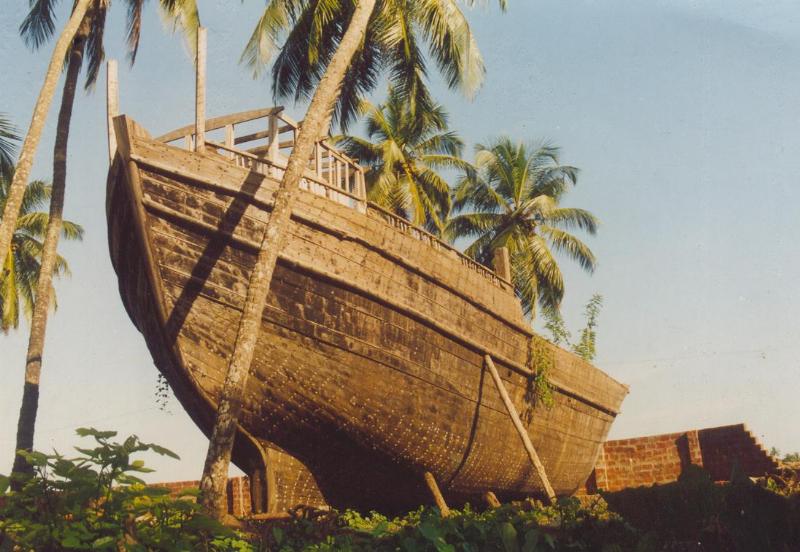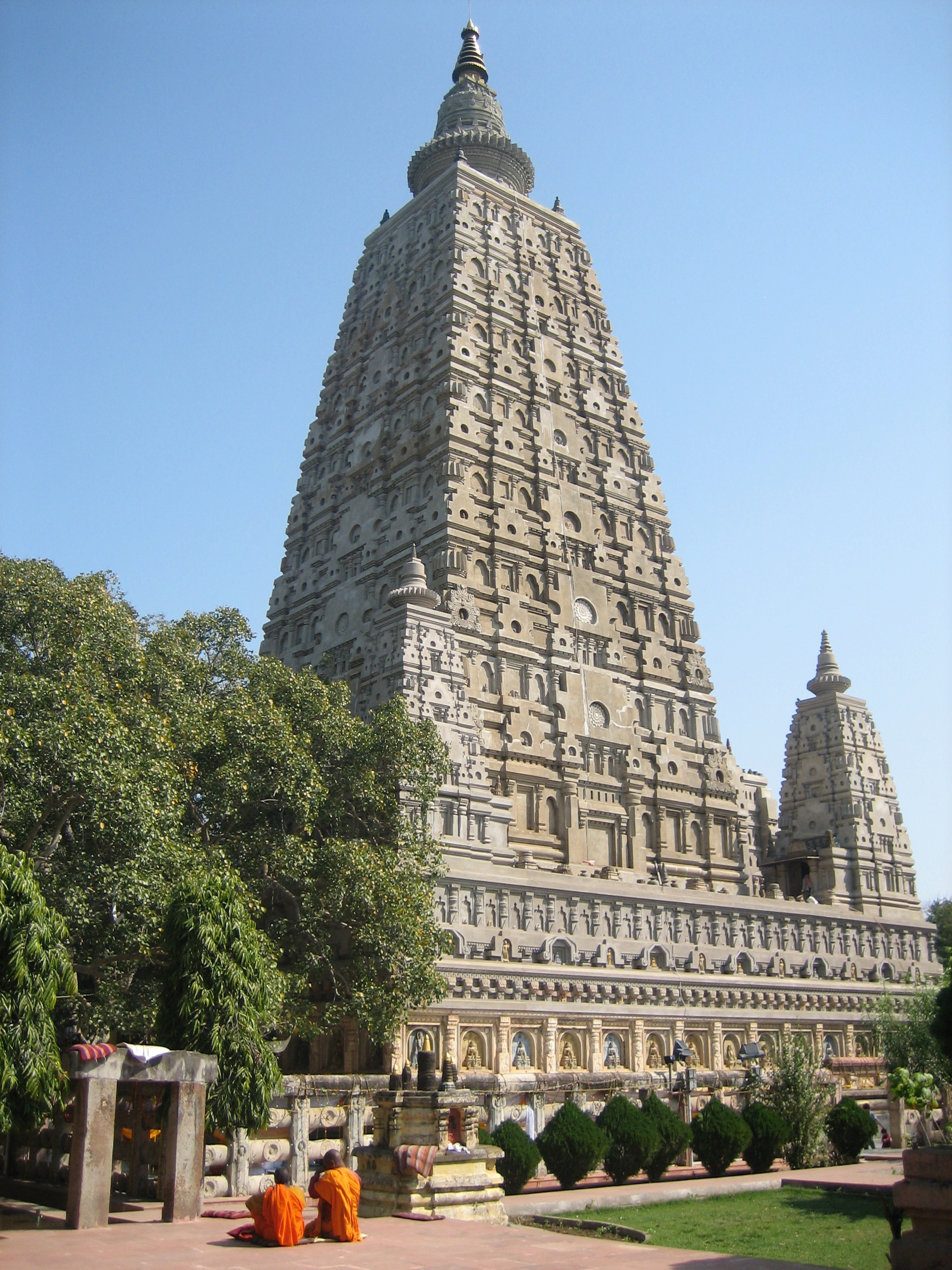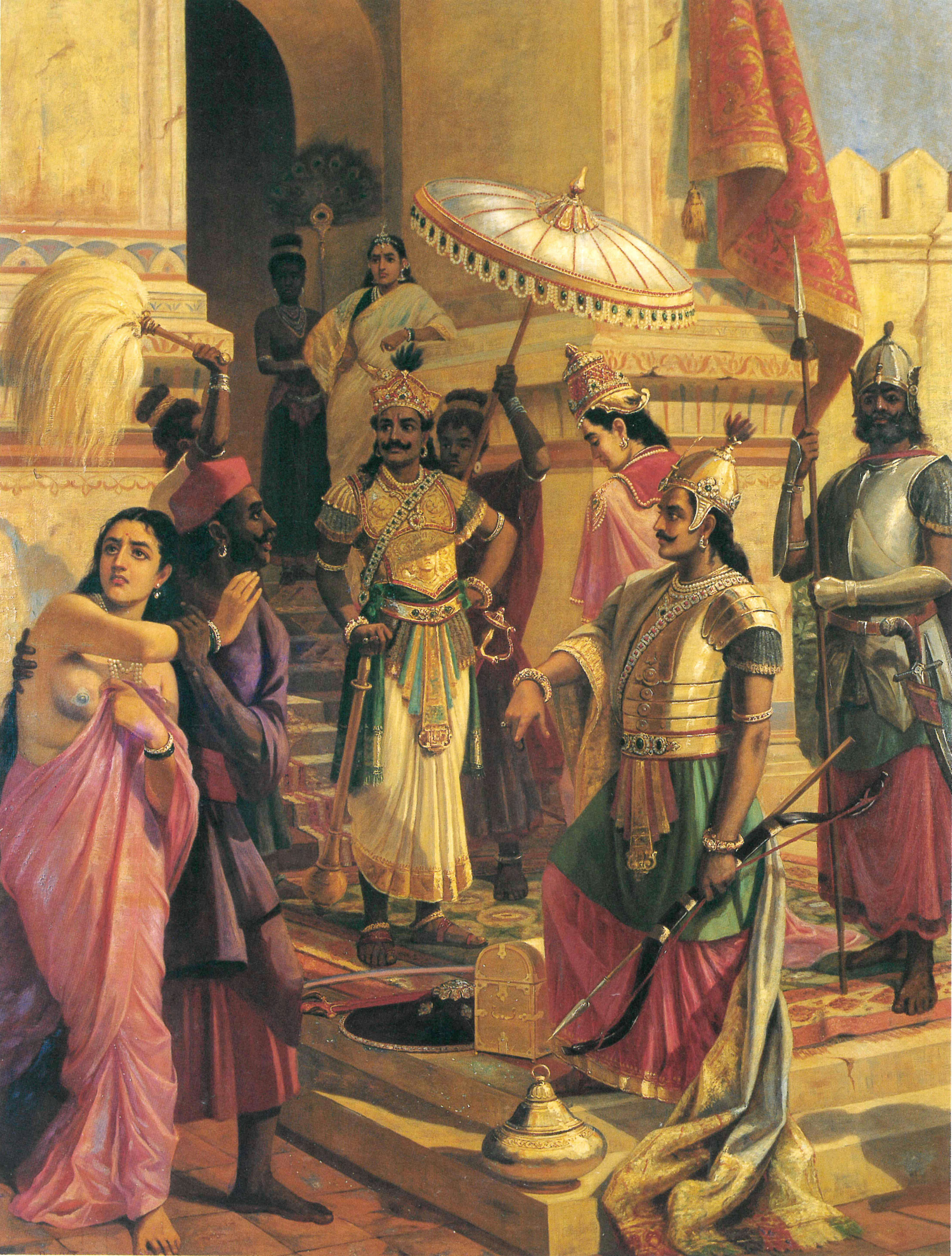|
Azhakodi Devi Temple
Azhakodi Devi Temple (Malayalam: അഴകൊടി ദേവീക്ഷേത്രം) or Azhakodi Devi Mahakshethram is a Hindu temple located in Thiruthiyad, Kozhikode District, Kerala, South India. It is one of the famous Devi temples, situated hardly 1.5 km away from the Mofussil Bus stand and 2.5 km from the KSRTC Bus stand, the area still retains the beauty and charm of un-spoilt rural settings within the heart of the Kozhikode city. The temple and the Kalayana Mandapom (Azhakodi Devi Mandiram) are administered by the Malabar Devaswom Board. The most ancient and historically renowned temple "Azhakodi Devi Mahashekthram" has its deity in the form of "Bhadrakali" in a calm disposition. The temple consists of seven maternal incarnations: Brahmani, Maheshvari, Kaumari, Vaishnavi, Varahi, Indrani and Chamundi. A sivalinga is also present. There is a legend behind this temple, that the samoothiri entrusted six of his generals to the temple "Arikkodikkavu" wh ... [...More Info...] [...Related Items...] OR: [Wikipedia] [Google] [Baidu] |
Kozhikode District
Kozhikode (), is one of the 14 districts in the Indian state of Kerala, along its southwestern Malabar Coast. The city of Kozhikode, also known as Calicut, is the district headquarters. The Kozhikode Municipal Corporation has a corporation limit population of 609,224 and a metropolitan population of more than 2 million, making Kozhikode metropolitan area the second-largest in Kerala and the 19th largest in India. Kozhikode is classified as a Tier 2 city by the Government of India. NIT Calicut, NIEIT and IIM Kozhikode are institutions of national importance located in the district. Kozhikode is the largest city in the erstwhile Malabar District and acted as its headquarters during British Raj. In antiquity and the medieval period, Kozhikode was dubbed the ''City of Spices'' for its role as the major trading point for Indian spices. It was the capital of an independent kingdom ruled by the Samoothiris (Zamorins), which was also the largest kingdom in Kerala prior to t ... [...More Info...] [...Related Items...] OR: [Wikipedia] [Google] [Baidu] |
Kaumari
Matrikas (Sanskrit: मातृका (singular), IAST: mātṛkā, lit. "mothers") also called Mataras or Matri, are a group of mother goddesses in Hinduism. The Matrikas are often depicted in a group of seven, the Saptamatrika(s) (Seven Mothers). However, they are also depicted as a group of eight, the Ashtamatrika(s). In the '' Brihat Samhita'', Varahamihira says that "Matrikas are forms of Parvati taken by her with cognizance of (different major Hindu) gods corresponding to their names." They are associated with these gods as their energies (''Shaktis''). Brahmani emerged from Brahma, Vaishnavi from Vishnu, Maheshvari from Shiva, Indrani from Indra, Kaumari from Kartikeya, Varahi from Varaha and Chamunda from Chandi. And additionals are Narasimhi from Narasimha and Vinayaki from Ganesha. Originally the seven goddesses of the seven stars of the star cluster of the Pleiades, they became quite popular by the seventh century CE and a standard feature of the Hindu goddesses's ... [...More Info...] [...Related Items...] OR: [Wikipedia] [Google] [Baidu] |
Temples Of Kerala
A temple (from the Latin ) is a place of worship, a building used for spiritual rituals and activities such as prayer and sacrifice. By convention, the specially built places of worship of some religions are commonly called "temples" in English, while those of other religions are not, even though they fulfill very similar functions. The religions for which the terms are used include the great majority of ancient religions that are now extinct, such as the Ancient Egyptian religion and the Ancient Greek religion. Among religions still active: Hinduism (whose temples are called Mandir or Kovil), Buddhism (whose temples are called Vihāra, Vihar), Sikhism (whose temples are called Gurdwara, gurudwara), Jainism (whose temples are sometimes called derasar), Zoroastrianism (whose temples are sometimes called Agiary), the Baháʼí Faith (which are often simply referred to as Baháʼí House of Worship), Taoism (which are sometimes called Daoguan), Shinto (which are often called ... [...More Info...] [...Related Items...] OR: [Wikipedia] [Google] [Baidu] |
Sanctum Sanctorum
The Latin phrase ''sanctum sanctorum'' is a translation of the Hebrew term ''קֹדֶשׁ הַקֳּדָשִׁים'' (Qṓḏeš HaQŏḏāšîm), literally meaning Holy of Holies, in Latin texts, this generally refers to the holiest place of the Ancient Israelites, inside the Tabernacle and later inside the Temple in Jerusalem. However, the term also has some derivative use in application to imitations of the Tabernacle in church architecture. The plural form ''sancta sanctorum'' is also used, arguably as a synecdoche, referring to the holy relics in the sanctuary. The Vulgate translation of the Bible uses ''sancta sanctorum'' for the Holy of Holies. Hence, the derivative usage denotes the Sancta Sanctorum chapel in the complex of the Archbasilica of Saint John Lateran, Rome. In Hinduism, the innermost part of a temple, where the deity's '' Murti'' is kept, forms the '' Garbhagriha'', also known as a sanctum sanctorum. Etymology The Latin word '' sanctum'' is the neuter f ... [...More Info...] [...Related Items...] OR: [Wikipedia] [Google] [Baidu] |
Temple
A temple (from the Latin ) is a place of worship, a building used for spiritual rituals and activities such as prayer and sacrifice. By convention, the specially built places of worship of some religions are commonly called "temples" in English, while those of other religions are not, even though they fulfill very similar functions. The religions for which the terms are used include the great majority of ancient religions that are now extinct, such as the Ancient Egyptian religion and the Ancient Greek religion. Among religions still active: Hinduism (whose temples are called Mandir or Kovil), Buddhism (whose temples are called Vihar), Sikhism (whose temples are called gurudwara), Jainism (whose temples are sometimes called derasar), Zoroastrianism (whose temples are sometimes called Agiary), the Baháʼí Faith (which are often simply referred to as Baháʼí House of Worship), Taoism (which are sometimes called Daoguan), Shinto (which are often called Jinja), C ... [...More Info...] [...Related Items...] OR: [Wikipedia] [Google] [Baidu] |
Sivalinga
A lingam ( , lit. "sign, symbol or mark"), sometimes referred to as linga or Shiva linga, is an abstract or aniconic representation of the Hindu god Shiva in Shaivism. The word ''lingam'' is found in the Upanishads and epic literature, where it means a "mark, sign, emblem, characteristic", the "evidence, proof, symptom" of Shiva and Shiva's power. The lingam of the Shaivism tradition is a short cylindrical pillar-like symbol of Shiva, made of stone, metal, gem, wood, clay or precious stones. It is often represented within a disc-shaped platform, the ''yoni'' – its feminine counterpart, consisting of a flat element, horizontal compared to the vertical lingam, and designed to allow liquid offerings to drain away for collection. The ''lingam'' is an emblem of generative and destructive power. While rooted in representations of the male sexual organ, the ''lingam'' is regarded as the "outward symbol" of the "formless reality", the symbolization of merging of the 'primordial ma ... [...More Info...] [...Related Items...] OR: [Wikipedia] [Google] [Baidu] |
Chamundi
Chamunda (, ), also known as Chamundeshwari, Chamundi or Charchika, is a fearsome form of Chandi, the Hindu mother goddess, Mahadevi and is one of the seven Matrikas.Wangu p.72 She is also one of the chief Yoginis, a group of sixty-four or eighty-one Tantric goddesses, who are attendants of the warrior goddess Parvati.Wangu p.114 The name is a combination of Chanda and Munda, two demons whom Chamunda killed. She is closely associated with Kali, another fierce aspect of Parvati. She is identified with goddesses Parvati, Kali or Durga. The goddess is often portrayed as residing in cremation grounds or near holy fig trees. The goddess is worshipped by ritual animal sacrifices along with offerings of wine. The practice of animal sacrifices has become less common with Vaishnavite influences. Origins Ramakrishna Gopal Bhandarkar says that Chamunda was originally a tribal goddess, worshipped by the tribals of the Vindhya mountains in central India. These tribes were known to o ... [...More Info...] [...Related Items...] OR: [Wikipedia] [Google] [Baidu] |
Indrani
Indrani (Sanskrit: इन्द्राणी, IAST: ''Indrāṇī''), also known as Shachi (Sanskrit: शची, IAST: ''Śacī''), is the queen of the Deva (Hinduism), devas in Hinduism. Described as tantalisingly beautiful, proud and kind, she is the daughter of the asura Puloman and the consort of the king of the Deva (Hinduism), devas, Indra. According to legend, due to her heavenly beauty and sensuality, Indrani was desired by many men, many of whom tried to marry her. When Indra was away performing his penance for the slaying of Vritra, Vritasura, Nahusha, a mortal king of the Lunar dynasty, was chosen as the ruler of heaven. The latter tried to seduce Shachi and make her his queen, though she cleverly executed a scheme to dethrone him and later reunite with her husband. Indrani (or Aindri) is also one of the Sapta Matrika—the seven divine mothers. She is an important goddess in Shaktism, a major sect of Hinduism. Indrani is rarely worshipped as an independent deity ... [...More Info...] [...Related Items...] OR: [Wikipedia] [Google] [Baidu] |
Varahi
Varahi (, IAST:) is one of the Matrikas, a group of seven mother goddesses in the Hindu religion who bears the head of a sow. In Nepal, she is called Barahi. In Rajasthan and Gujarat, she is venerated as Dandini. Varahi is more commonly venerated in the sect of the Goddess-oriented Shaktism, but also in Shaivism (devotees of Shiva) and Vaishnavism (devotees of Vishnu). She is usually worshipped at night, using secretive Vamamarga Tantric practices. Her forms can be seen in Buddhism as well, like the Buddhist goddesses Vajravārāhī and Marichi. Legend According to the Shumbha-Nishumbha story of the ''Devi Mahatmya'' from the '' Markandeya Purana'' religious texts, the Matrikas goddesses appears as ''shakti''s (feminine powers) from the bodies of the gods. The scriptures say Varahi was created from Varaha. She has a boar form, wields a chakra (discus) and fights with a sword. After the battle described in the scripture, the Matrikas dancedrunk on the demons' bloo ... [...More Info...] [...Related Items...] OR: [Wikipedia] [Google] [Baidu] |
Vaishnavi (Matrika Goddess)
Matrikas (Sanskrit: मातृका (singular), International Alphabet of Sanskrit Transliteration, IAST: mātṛkā, lit. "mothers") also called Mataras or Matri, are a group of mother Devi, goddesses in Hinduism. The Matrikas are often depicted in a group of seven, the Saptamatrika(s) (Seven Mothers). However, they are also depicted as a group of eight, the Ashtamatrika(s). In the ''Bṛhat Saṃhitā, Brihat Samhita'', Varāhamihira, Varahamihira says that "Matrikas are forms of Parvati taken by her with cognizance of (different major Hindu) gods corresponding to their names." They are associated with these gods as their energies (''Shaktis''). Brahmani (Matrika), Brahmani emerged from Brahma, Vaishnavi from Vishnu, Maheshvari from Shiva, Indrani from Indra, Kaumari from Kartikeya, Varahi from Varaha and Chamunda from Chandi. And additionals are Pratyangira, Narasimhi from Narasimha and Vinayaki from Ganesha. Originally the seven goddesses of the seven stars of the star cl ... [...More Info...] [...Related Items...] OR: [Wikipedia] [Google] [Baidu] |
Maheshvari
Matrikas (Sanskrit: मातृका (singular), IAST: mātṛkā, lit. "mothers") also called Mataras or Matri, are a group of mother goddesses in Hinduism. The Matrikas are often depicted in a group of seven, the Saptamatrika(s) (Seven Mothers). However, they are also depicted as a group of eight, the Ashtamatrika(s). In the '' Brihat Samhita'', Varahamihira says that "Matrikas are forms of Parvati taken by her with cognizance of (different major Hindu) gods corresponding to their names." They are associated with these gods as their energies (''Shaktis''). Brahmani emerged from Brahma, Vaishnavi from Vishnu, Maheshvari from Shiva, Indrani from Indra, Kaumari from Kartikeya, Varahi from Varaha and Chamunda from Chandi. And additionals are Narasimhi from Narasimha and Vinayaki from Ganesha. Originally the seven goddesses of the seven stars of the star cluster of the Pleiades, they became quite popular by the seventh century CE and a standard feature of the Hindu goddesse ... [...More Info...] [...Related Items...] OR: [Wikipedia] [Google] [Baidu] |
Kerala
Kerala ( , ) is a States and union territories of India, state on the Malabar Coast of India. It was formed on 1 November 1956, following the passage of the States Reorganisation Act, by combining Malayalam-speaking regions of the erstwhile regions of Kingdom of Cochin, Cochin, Malabar District, Malabar, South Canara, and Travancore. Spread over , Kerala is the 14th List of states and union territories of India by area, smallest Indian state by area. It is bordered by Karnataka to the north and northeast, Tamil Nadu to the east and south, and the Laccadive Sea, Lakshadweep Sea to the west. With 33 million inhabitants as per the 2011 Census of India, 2011 census, Kerala is the List of states of India by population, 13th-largest Indian state by population. It is divided into 14 List of districts of Kerala, districts with the capital being Thiruvananthapuram. Malayalam is the most widely spoken language and is also the official language of the state. The Chera dynasty was the f ... [...More Info...] [...Related Items...] OR: [Wikipedia] [Google] [Baidu] |









